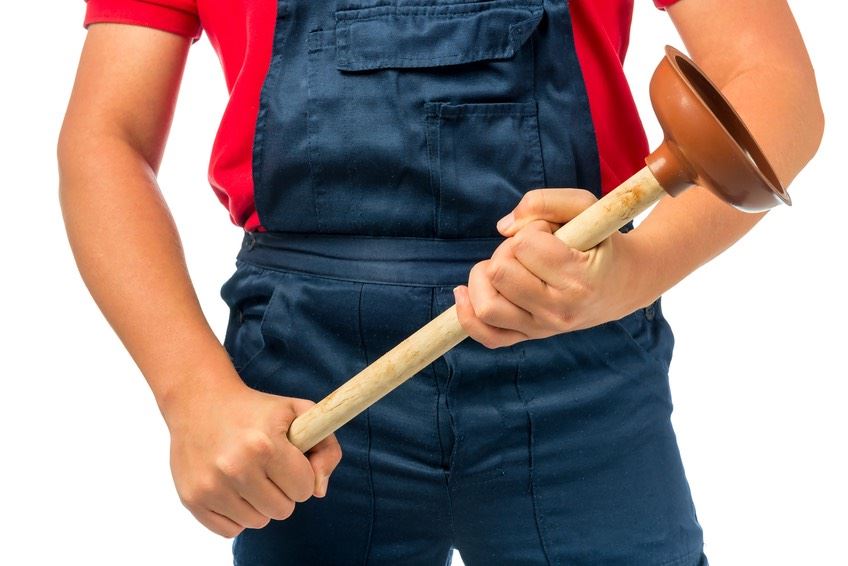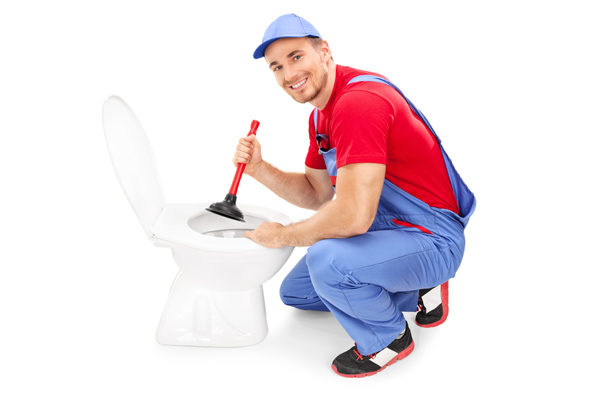They are making a number of great pointers on How To Use Your Toilet Plunger Correctly in 5 Easy Steps as a whole in this great article beneath.

Intro
Correct upkeep of house drains pipes is necessary for stopping blockages and guaranteeing smooth water flow. Among the trick tools in every homeowner's toolkit is the bettor, together with different drainpipe cleansers developed to take on stubborn clogs properly. This post explores just how to use bettors and drainpipe cleaners properly to keep your drains pipes streaming openly.
Section 1: Recognizing Plungers
Sorts of Plungers
There are a number of sorts of plungers offered, each designed for different sorts of drains and blocks. One of the most common types consist of cup plungers, flange bettors, and accordion plungers.
How Plungers Job
Plungers deal with the principle of producing stress and suction to displace obstructions. When properly used over a drainpipe, they develop a vacuum cleaner that can pull out debris or break up obstructions.
Choosing the Right Plunger
Picking the right bettor depends on the kind of drain and the nature of the clog. Mug bettors are suitable for sinks and tubs, while flange plungers are much better fit for toilets as a result of their style.
Common Blunders with Plungers
Avoiding these errors guarantees effective plunging: incorrect seal around the drain, inadequate pressure, and not clearing bordering debris.
Area 2: Making Use Of Plungers Efficiently
Prep work
Before plunging, make certain the plunger covers the drainpipe entirely and forms a tight seal. Clear any type of noticeable particles around the drain opening.
Method
Begin with mild plunging activities to build suction. Rise pressure slowly, making use of a stable rhythm. Repeat as essential until the drain gets rid of.
Fixing Tips
If diving doesn't work, attempt adjusting the seal, applying oil jelly for a better seal, or utilizing a various type of plunger.
Section 3: Understanding Drainpipe Cleaning Company
Kinds Of Drainpipe Cleansers
Drain pipes cleansers can be chemical or chemical. Chemical cleansers make use of strong chemicals to liquify obstructions, while enzymatic cleaners make use of all-natural enzymes to break down organic matter.
Just How Drain Cleaners Job
Chemical cleaners respond with clogs to liquify them, while chemical cleaners break down natural materials like hair and oil without damaging pipes.
Safety and security Considerations
Constantly put on gloves and eye security when making use of chemical drain cleaners. Make certain sufficient air flow and adhere to manufacturer instructions very carefully.
Eco-Friendly Alternatives
Take into consideration using vinegar and baking soda or enzyme-based cleaners for environment-friendly alternatives that are more secure for pipelines and the atmosphere.
Area 4: Using Drainpipe Cleaning Company Efficiently
Application Techniques
Put chemical cleaners straight into the drainpipe opening. Allow them to help the recommended time prior to purging with hot water. Enzymatic cleaners ought to sit overnight.
Safety measures
Stay clear of blending different types of cleansers, as this can produce hazardous fumes. Never make use of chemical cleaners along with a bettor, as splashing can take place.
Dealing With Persistent Blockages
For relentless clogs, take into consideration using a plumbing serpent or calling a professional plumbing professional to prevent damage to pipelines.
Verdict
In conclusion, comprehending exactly how to make use of bettors and drainpipe cleaners efficiently is necessary for keeping healthy and balanced pipes systems. By picking the right devices and strategies, homeowners can tackle small obstructions and avoid significant pipes concerns down the line.
How To Properly Use A Plumbing Snake To Clear Drains
When any drain clogs in our home arise, we tend to gravitate toward the plunger and little else. In cases where the plunger and its vacuum-created pressure are not able to clear clogs, many immediately move to harmful chemicals or simply call their plumber to fix the issue.
we’re happy to help with all drain cleaning needs and concerns. This includes informing you on a few other home remedies you may have at your disposal for minor to moderate clogs, one of which is the use of a plumbing snake. Many people have never used one of these before – let’s go over the steps to take when your drain clogs and you have a plumbing snake available.
Attempt Plunger Use
The first step here, as we noted above, should indeed be to grab your plunger when you notice a drain clog and attempt to resolve it this way. If you’re unsure how to use a particular type of plunger, our plumbers can answer any questions you have. If this doesn’t do the trick, however, you move on to the snake.
Locate And Prepare Snake
A plumbing snake is a metal or plastic device that’s generally about a quarter of an inch thick. It’s design with significant extensions, meant to reach down into your clogged drain and push the clog out. Snakes also contain drain augers that will latch onto and push stubborn blockages.
If your plunger doesn’t clear a clog, locate your snake and bring it to the drain in question. We also recommend keeping a bucket nearby to collect the clog once you pull it out, plus we’d advise wearing goggles and possibly protective gloves.
Feed Snake
Once you’re ready to go, feed the snake slowly down the drain, using the crank device it comes with to keep it moving until it finds the clog. Once this happens, much of the clog will be latched onto the coil so you can pull it out, while the rest will simply break up and flow downward.
Detach Debris
Remove the snake slowly from the drain, and once you’ve done so, pick off any debris that’s stuck to the coil. This is another area where wearing gloves is a must.
Flush Drain
Finally, take a few minutes to ensure the snake has done its job correctly. If you’ve been using it on a toilet, flush the toilet a couple times and make sure everything flows well. If you’ve used it on a different drain, flush it with some room temperature water.
https://www.mybuddytheplumber.com/blog/how-to-properly-use-a-plumbing-snake-to-clear-drains/

Application Techniques
Put chemical cleaners straight into the drainpipe opening. Allow them to help the recommended time prior to purging with hot water. Enzymatic cleaners ought to sit overnight.
Safety measures
Stay clear of blending different types of cleansers, as this can produce hazardous fumes. Never make use of chemical cleaners along with a bettor, as splashing can take place.
Dealing With Persistent Blockages
For relentless clogs, take into consideration using a plumbing serpent or calling a professional plumbing professional to prevent damage to pipelines.
Verdict
In conclusion, comprehending exactly how to make use of bettors and drainpipe cleaners efficiently is necessary for keeping healthy and balanced pipes systems. By picking the right devices and strategies, homeowners can tackle small obstructions and avoid significant pipes concerns down the line.
How To Properly Use A Plumbing Snake To Clear Drains
When any drain clogs in our home arise, we tend to gravitate toward the plunger and little else. In cases where the plunger and its vacuum-created pressure are not able to clear clogs, many immediately move to harmful chemicals or simply call their plumber to fix the issue.
we’re happy to help with all drain cleaning needs and concerns. This includes informing you on a few other home remedies you may have at your disposal for minor to moderate clogs, one of which is the use of a plumbing snake. Many people have never used one of these before – let’s go over the steps to take when your drain clogs and you have a plumbing snake available.
Attempt Plunger Use
The first step here, as we noted above, should indeed be to grab your plunger when you notice a drain clog and attempt to resolve it this way. If you’re unsure how to use a particular type of plunger, our plumbers can answer any questions you have. If this doesn’t do the trick, however, you move on to the snake.
Locate And Prepare Snake
A plumbing snake is a metal or plastic device that’s generally about a quarter of an inch thick. It’s design with significant extensions, meant to reach down into your clogged drain and push the clog out. Snakes also contain drain augers that will latch onto and push stubborn blockages.
If your plunger doesn’t clear a clog, locate your snake and bring it to the drain in question. We also recommend keeping a bucket nearby to collect the clog once you pull it out, plus we’d advise wearing goggles and possibly protective gloves.
Feed Snake
Once you’re ready to go, feed the snake slowly down the drain, using the crank device it comes with to keep it moving until it finds the clog. Once this happens, much of the clog will be latched onto the coil so you can pull it out, while the rest will simply break up and flow downward.
Detach Debris
Remove the snake slowly from the drain, and once you’ve done so, pick off any debris that’s stuck to the coil. This is another area where wearing gloves is a must.
Flush Drain
Finally, take a few minutes to ensure the snake has done its job correctly. If you’ve been using it on a toilet, flush the toilet a couple times and make sure everything flows well. If you’ve used it on a different drain, flush it with some room temperature water.
https://www.mybuddytheplumber.com/blog/how-to-properly-use-a-plumbing-snake-to-clear-drains/

We are very enthusiastic about Here's How to Correctly Use a Toilet Plunger and I am assuming you enjoyed our blog post. Don't hesitate to take the time to distribute this page if you enjoyed reading it. I recognize the value of reading our article about A Guide to Plungers (and How to Use Them).
Call Today